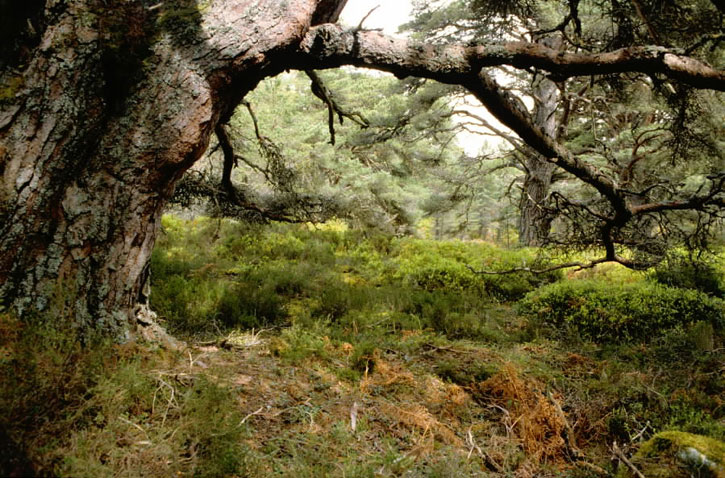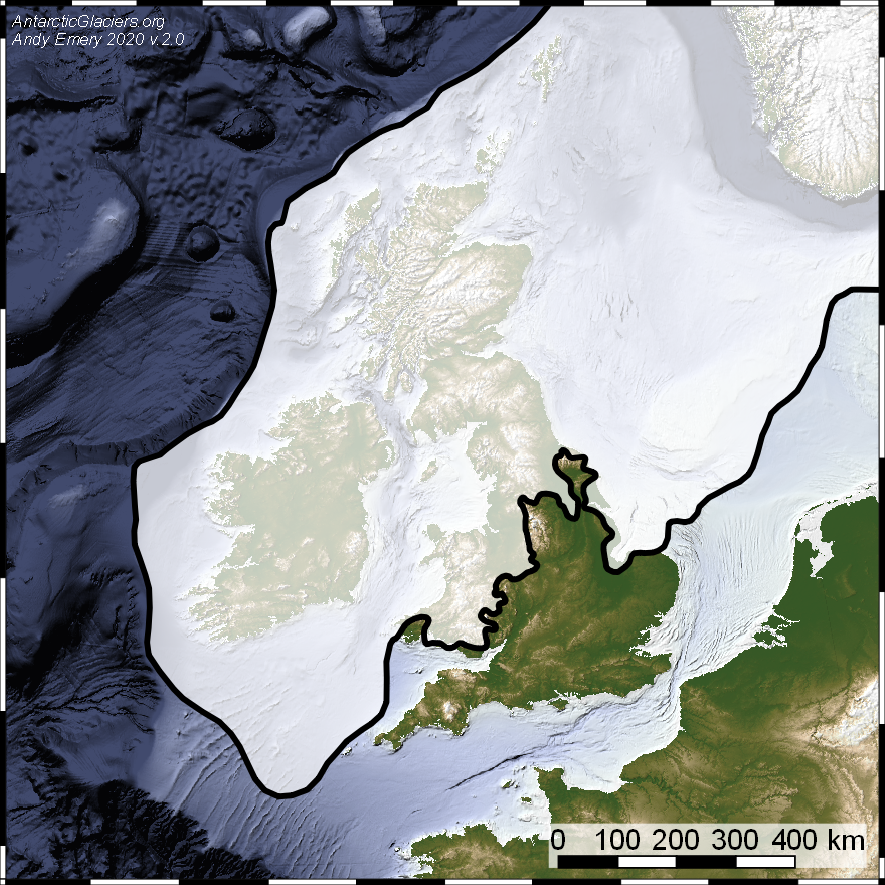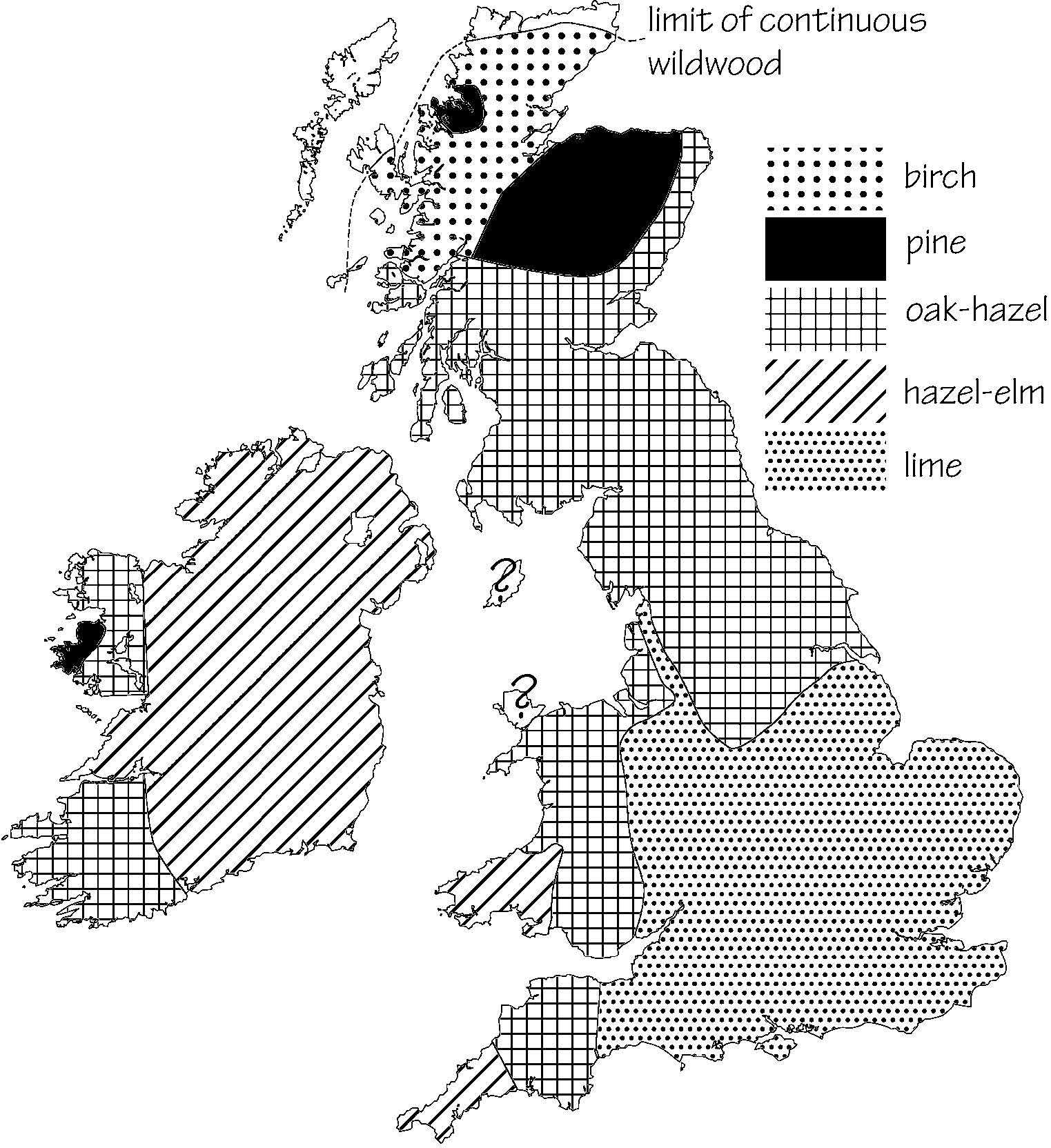What was the Wildwood?
09/11/2022
 All regions of the world have a natural climax community. This is basically the end goal of any habitat's flora, and it depends heavily upon environmental factors such as climate, altitude, soil type, and scale. Britain, as a largely wet and mild, temperate set of islands has a defined climax community of mixed deciduous (aka broadleaf) woodlands. Covering 85% of all land in Britain, only excluding mountaintops and beaches, was the incredible climax community of the Wildwood.
All regions of the world have a natural climax community. This is basically the end goal of any habitat's flora, and it depends heavily upon environmental factors such as climate, altitude, soil type, and scale. Britain, as a largely wet and mild, temperate set of islands has a defined climax community of mixed deciduous (aka broadleaf) woodlands. Covering 85% of all land in Britain, only excluding mountaintops and beaches, was the incredible climax community of the Wildwood.
The wildwood consisted of all 18 of our native woodland types, each occupying their own niches, and the trees it consisted of are generally considered to be our only true-native trees. Anything thereafter is considered non-native or invasive. From picturesque birch woodlands on the northernmost tip of Scotland to the alder carrs of our historic wetlands, the wildwoods must have been incredible to behold, and not at all like modern England with its woodland coverage of only 13%. But when did it form, and how was it supported? And where did it go? On this page I'd like to explore the story of the British Wildwood -- where it came from, what it was, and where it went. Stay Tuned.


This page currently includes the history that led up to the wildwood as well as the defining woodland types found within it. As I work on this page, I'd like to share for now these two photos that illustrate beautifully what areas of this Wildwood in Scotland would've looked like. The bright, open birch forests of the northern edge would have been abundant in their understorey, uniform and beautiful, while the incredible Black Wood of Rannoch demonstrates the eerie beauty of our native pine woodlands. You can read a bit about the Black Wood of Rannoch here.
Sources
Leading up to the Wildwood was...
 The Ice Age
The Ice Age

Our current Ice Age began 2.6 million years ago, with current day being in an interglacial phase of warmer climate. Colder episodes are referred to as glacials. During the glacial period preceding the Boreal Period (12,000-6,200 BC) Britain, still a peninsula of western Europe, was covered in a vast ice sheet excluding the mountain peaks of Scotland.
The most recent glaciation period lasted from 100,000-12,000 BC, known as the Late Devensian glaciation. This stage is also often referred to as the Late Pleistocene or Late Glacial period.
This Devensian British-Irish Ice sheet, present over the UK in 25,000 BC (27,000 years ago), is known to be a large mass of ice that covered around two thirds of Britain and Ireland. This slowly regressed over the course of over ten thousand years, to the point that it had totally disappeared by 9300 BC.
Throughout the Ice Age we had no woodlands to speak of, due to the overwhelming presence of ice greatly restricting habitat. As well as this, due to the freezing temperatures, tree species that would later colonise the UK during the Boreal period were by and large surviving around the Mediterranean ocean where the climate was favourable. Any pre-glacial flora to be found would have been small and hardy, evolved to handle those frozen tundras with permafrost. Despite this lack of flora to speak of, the Ice Age was crucial for the development of our woodlands, as the progressive melting of the ice sheets gave us the watercourses and denes/valleys utilised by our pioneering tree species later on.
 The Boreal Period (12,000-6,200 BC)
The Boreal Period (12,000-6,200 BC)
- 12,000-10,000 BC - The Pioneers
As the ice sheets dwindled away with rising temperatures, the UK entered a boreal phase with a climate similar to Siberia. Our land became covered in tundra and moorlands, with very hardy, shrubby vegetation that could withstand the harsh conditions. Throughout 12-10,000 BC we began to see colonisation by our first pioneering species of tree, namely birch (downy and silver) first, followed by aspen and sallow. These would occupy sheltered areas in copses, such as the geography denes now occupy. During this period there was very little competition over favourable habitats, being crucial for these shade-intolerant pioneering trees to prosper. In Kent, our original native Scots Pine became established within this period.

- 10,000-8,700 BC - Rapid Warming
As the interglacial period advanced, the UK’s climate became very similar to what it is now, which facilitated the rapid expansion of vast, continuous woodlands that came to cover around 85% of all land. This was mostly dominated by birch forests, due to the fact that they are a pioneering species suitable for very fast spread. As well as this, up in the Scottish Highlands the Scots Pine became much more widespread.
Being dominated by birch trees would mean that our woodlands had very high light levels, as birch trees form a very loose canopy. This would have been abundant in flowering plants, as birch woodlands are seen to be now.
Newly arriving in this period are hazel trees, which colonise and spread rapidly. Although hazel trees are now generally an understorey species, during this time they would’ve easily grown to 18-20m. Furthermore, toward the end of this period alder trees also begin to colonise the wet, boggy conditions of lowland England. Lime trees begin to colonise from the south up to the Tyne Valley.

- 8,700-8,000 BC - Mesolithic Period
By this period, birch and pine established themselves as the dominant species of our highlands, particularly to the northern end of the UK and mostly in Scotland. Down south and in the lowland areas, birch was mixed with hazel trees. However, oaks and elm trees began to establish themselves during this period as well – this was a death knell for these early pioneering species of tree, who would be outcompeted for light access and become dominated by the two overtime.

- 8,000-6,200 BC - Pioneers Outcompeted
In the northern range (namely Scotland) pines become overwhelmingly dominant (and restricted there), whereas through the middle of England oaks dominate. The southern third is mainly characterised by lime trees, which should be characteristic of the region to this day. With these tall, competitive trees overtaking all of Britain, woodlands defined by those early pioneering species such as birch become rare. Particularly, in England, they are completely outdone by oaks and elms. Our pioneers still remain very common throughout other types of woodland to this day.
In regards to oaks, the Sessile Oak is more characteristic of northern uplands, while the English Oak is more typical of southern lowlands.
During this period we see the entrance of our last truly native tree species – ash, holly, beech, and hornbeam. The shade-intolerant ash tree was largely outcompeted, and relegated to its most favourable habitats on mountains or near beaches. Holly is a hardy understorey species that formed clusters of holly thickets within woodlands. Beech and hornbeam were notably competitive as very tall-growing trees and further contributed to the loss of birch, aspen, and sallow woodlands.
 The Atlantic Period (6,200-3,800 BC)
The Atlantic Period (6,200-3,800 BC)
As the interglacial period progressed, climate conditions became even warmer and wetter than they are currently – providing long and stable climate conditions that were perfect for woodlands developing into climax communities. All habitats are naturally progressing toward a climax community, which for the UK became mixed broadleaf woodland.
Significantly, during this time we see sea levels rising which, combined with a huge undersea landslip off the coast of Norway causing a huge flood in ~4,000 BC, led to the UK being separated from the rest of Europe, thereby isolating our species and ecosystems from the continent. The only way we know this to be true is through evidence of sea fossils found very far inland.


 All regions of the world have a natural climax community. This is basically the end goal of any habitat's flora, and it depends heavily upon environmental factors such as climate, altitude, soil type, and scale. Britain, as a largely wet and mild, temperate set of islands has a defined climax community of
All regions of the world have a natural climax community. This is basically the end goal of any habitat's flora, and it depends heavily upon environmental factors such as climate, altitude, soil type, and scale. Britain, as a largely wet and mild, temperate set of islands has a defined climax community of 

 The Ice Age
The Ice Age
 The Boreal Period (12,000-6,200 BC)
The Boreal Period (12,000-6,200 BC)


 The Atlantic Period (6,200-3,800 BC)
The Atlantic Period (6,200-3,800 BC)






